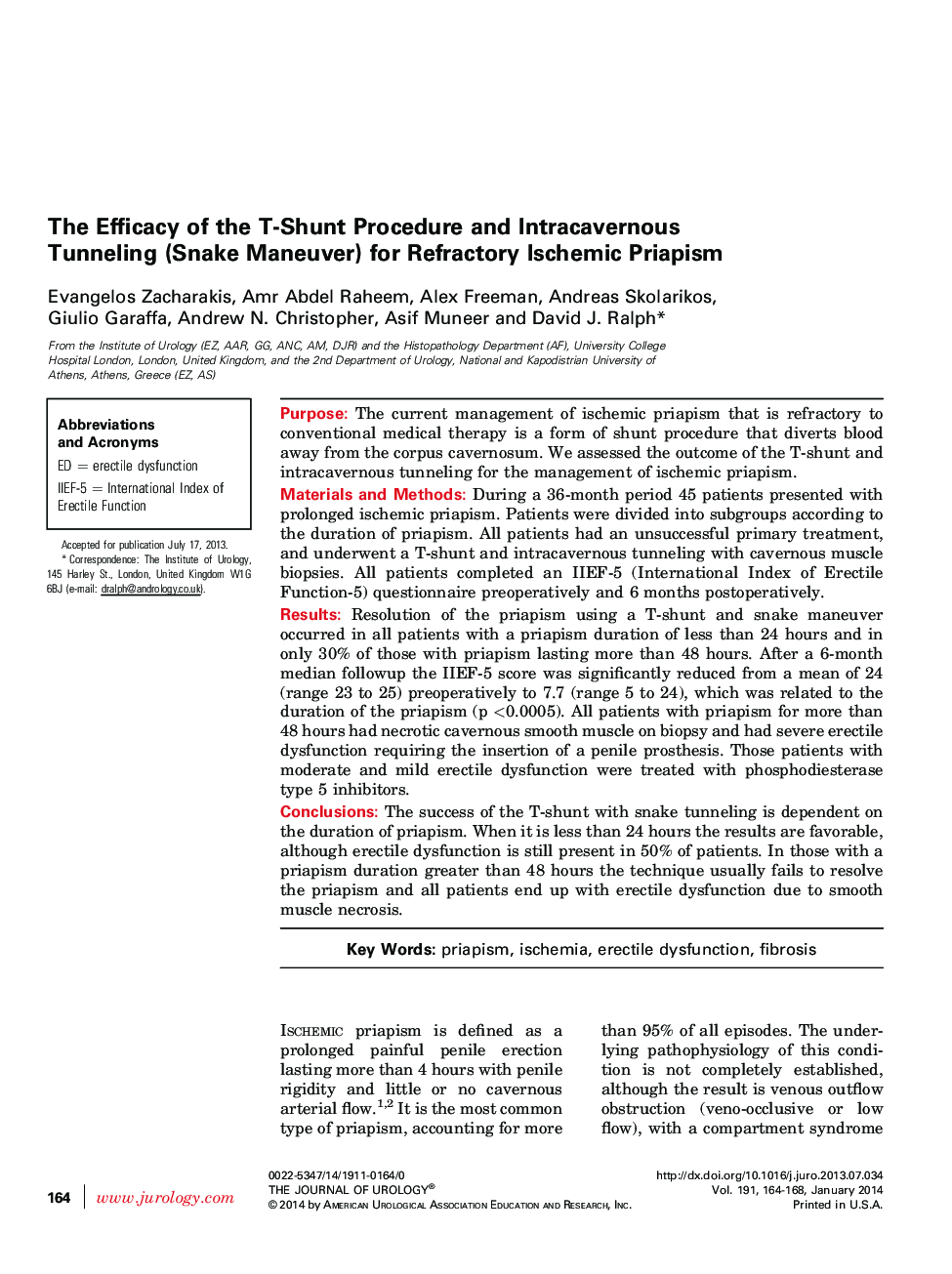| Article ID | Journal | Published Year | Pages | File Type |
|---|---|---|---|---|
| 3863568 | The Journal of Urology | 2014 | 5 Pages |
PurposeThe current management of ischemic priapism that is refractory to conventional medical therapy is a form of shunt procedure that diverts blood away from the corpus cavernosum. We assessed the outcome of the T-shunt and intracavernous tunneling for the management of ischemic priapism.Materials and MethodsDuring a 36-month period 45 patients presented with prolonged ischemic priapism. Patients were divided into subgroups according to the duration of priapism. All patients had an unsuccessful primary treatment, and underwent a T-shunt and intracavernous tunneling with cavernous muscle biopsies. All patients completed an IIEF-5 (International Index of Erectile Function-5) questionnaire preoperatively and 6 months postoperatively.ResultsResolution of the priapism using a T-shunt and snake maneuver occurred in all patients with a priapism duration of less than 24 hours and in only 30% of those with priapism lasting more than 48 hours. After a 6-month median followup the IIEF-5 score was significantly reduced from a mean of 24 (range 23 to 25) preoperatively to 7.7 (range 5 to 24), which was related to the duration of the priapism (p <0.0005). All patients with priapism for more than 48 hours had necrotic cavernous smooth muscle on biopsy and had severe erectile dysfunction requiring the insertion of a penile prosthesis. Those patients with moderate and mild erectile dysfunction were treated with phosphodiesterase type 5 inhibitors.ConclusionsThe success of the T-shunt with snake tunneling is dependent on the duration of priapism. When it is less than 24 hours the results are favorable, although erectile dysfunction is still present in 50% of patients. In those with a priapism duration greater than 48 hours the technique usually fails to resolve the priapism and all patients end up with erectile dysfunction due to smooth muscle necrosis.
